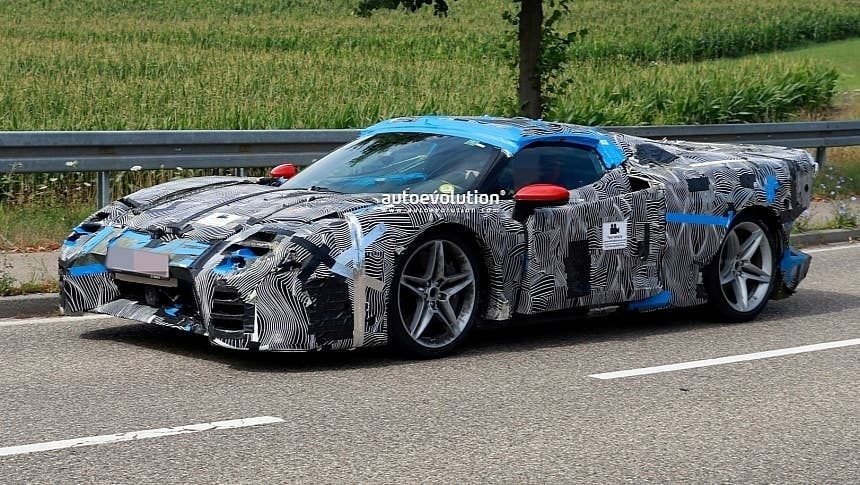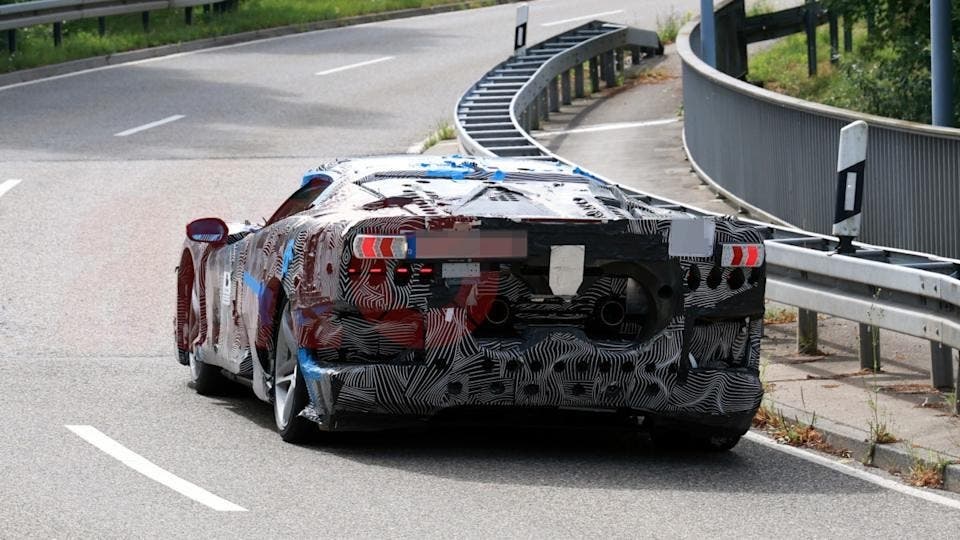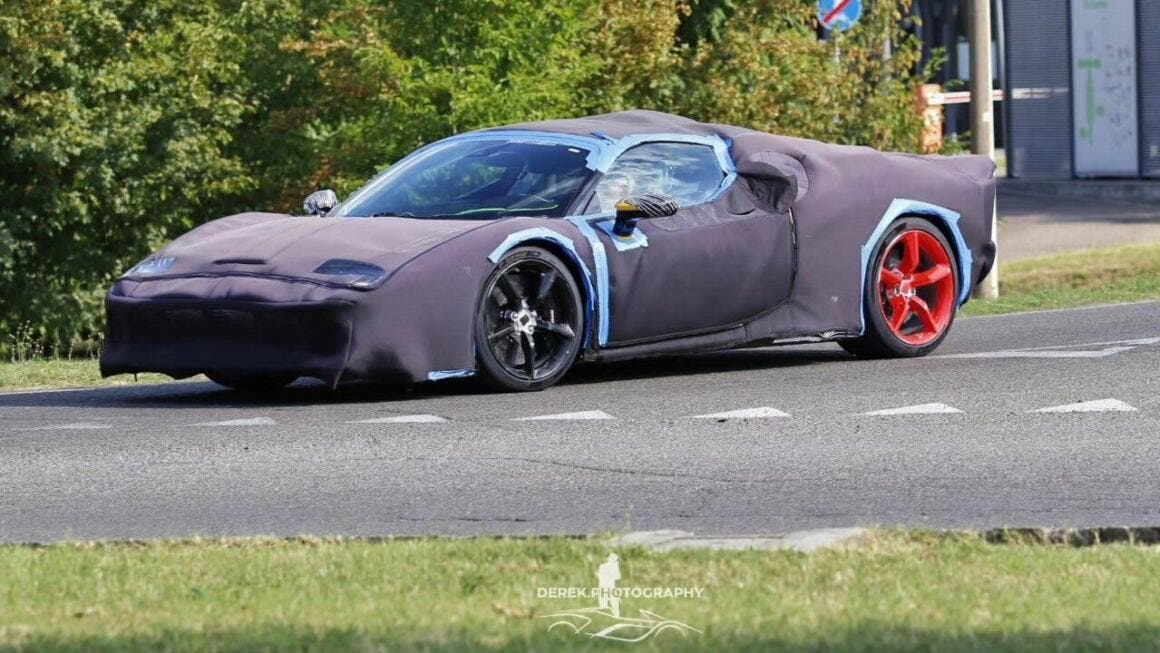Although the Ferrari SF90 Stradale officially left the price list almost a year ago, its sporting spirit hasn’t dimmed at all. Work is in full swing at Maranello on a direct successor, internally identified with the code F173M, which promises an evolutionary leap while maintaining the high-performance hybrid heart intact.
Ferrari SF90 successor spotted: F173M prototype hints at September 9 debut

A camouflaged prototype was recently caught during road testing and, despite heavy squared-pattern camouflage, some aesthetic novelties are already visible. A redesigned front end stands out, characterized by a rectangular-shaped central air intake and a more pronounced splitter, integrated more fluidly into the overall design. Although the hood maintains the classic protruding configuration, the final model will likely sport revised headlight clusters and optimized aerodynamic details.
The side profile appears to remain faithful to the original SF90, while the rear shows some modifications, including new cooling openings positioned between the exhausts and a revision of the taillights, which currently appear to be provisional units.
Inside, according to reports, there will be a revised cabin with redesigned steering wheel, updated digital instrumentation, and revised dashboard, to offer an even more immersive and technological driving experience.

On the technical front, the plug-in hybrid architecture will likely be updated. The current SF90 combines a 4.0-liter twin-turbo V8 with three electric motors and a 7.9 kWh battery, for a total output of 1,000 hp and 0-62 mph acceleration in just 2.5 seconds. The new F173M is expected to raise the bar even higher, improving both performance and efficiency.
This new chapter in Maranello’s hybrid range will follow the recent Ferrari 296 GTB and GTB Speciale, which use a V6, but the F173M will maintain the V8 to ensure a more performance-oriented premium positioning. Sources close to the company speak of September 9 as a key date for the debut, while production start is expected in early 2026.
